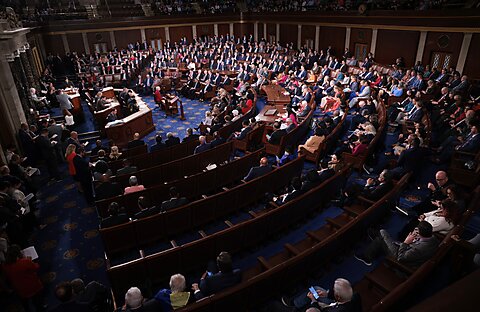
Apportionment & Immigration: 95 Percent of Noncitizen Growth Went to GOP States Since 2019
In response to a question about restricting immigration, House Representative Yvette D. Clarke (D‑NY) recently stated, “I need more people in my district just for redistricting purposes.” When a Republican member of Congress asked whether this was the motivation for other Democrats, including President Biden, to oppose more extreme asylum restrictions during a committee hearing at which I testified last week, former head of Immigration and Customs Enforcement Tom Homan stated:
I certainly believe it’s probably associated with the decision to overturn the Trump Census rule, so now [immigrants] will be mandated to be counted in the Census. When we reapportionate [sic] seats, it’s going to have an effect.
Although former President Trump did attempt to exclude some noncitizens from the Census count and from House apportionment, multiple courts found those efforts to be illegal and unconstitutional. The Constitution is clear: “Representatives shall be apportioned among the several states according to their respective numbers, counting the whole number of persons in each state.” But does this provision of the Constitution—whatever its merits—give Republicans a good reason to oppose immigration?
No, the data are equally clear: recent immigration trends are benefiting Republicans in states where they control the legislature and manage redistricting. About 62 percent of the three‐million increase in the total immigrant population from March 2019 to March 2023 has occurred in GOP states, according to the Current Population Survey Annual Social and Economic Supplement.
The American Community Survey (with a larger sample size but slightly older data) attributes 60 percent of the growth in the immigrant population to GOP states from July 2019 to July 2022. These percentages are also similar for the Latin American immigrant population growth.
What about noncitizens who might be excluded by a US citizen‐only census? For them, an overwhelming 95 percent of the increase in the noncitizen population has been in GOP states from March 2019 to March 2023. Eliminating the growth in the noncitizen population from 2019 to 2023 would have cost Republican states 1.2 million people, or about two seats in Congress (the average congressional district has 760,367 people). Figure 1 shows the net increase in immigrant populations for states under GOP and Democratic control.
Table 1 shows the full data from the Current Population Survey’s Annual Social and Economic Supplement for March 2023 and March 2019. The Republican state leading this trend is Texas, which netted 515,970 noncitizens and 833,028 immigrants overall. Other Republican states experiencing significant growth in their immigrant populations include Kentucky (130,061 noncitizens and 146,790 immigrants), South Carolina (102,096 and 157,396), and Florida (102,055 and 178,052). It is certainly likely that these states are attracting immigrants because of their strong job growth.
The argument that recent immigration is boosting Democratic representation in Congress is unsubstantiated. In 2015, I rebutted this same claim about recent illegal immigration. I noted, “Illegal immigration from 2000 to 2010 netted the Republicans about six seats in redistricting. Democrats managed only about 4.5, giving the Republican states yet again more than a seat advantage.” Clearly, immigration has not helped Democrats in terms of apportionment for decades. Yet, this misconception has become so entrenched that the former president tried to unconstitutionally exclude some noncitizens from the Census count.
I have also explained how it is false that Republicans fare poorly during periods when the immigrant share of the population is high. Republicans have controlled at least one chamber of Congress 85 percent of the years when the immigrant share of the population exceeded 10 percent, while not controlling either chamber 83 percent of all other years. This is a staggering disparity that has been completely overlooked in current political discourse. Republicans should not fear immigration based on unfounded political concerns.



